
伤口世界
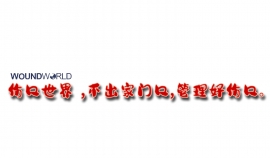
- 星期三, 08 11月 2023
Association between timing and consistency of physical activity and type 2 diabetes: a cohort study on participants of the UK Biobank
Caiwei Tian1 · Charlyne Bürki2,3 · Kenneth E. Westerman4,5,6 · Chirag J. Patel2
Received: 10 April 2023 / Accepted: 13 July 2023
© The Author(s)
Abstract
Aims/hypothesis We sought to quantify the relationship between morning, afternoon or evening physical activity and consistency (e.g. routine) and risk of type 2 diabetes.
Methods A cohort of 93,095 UK Biobank participants (mean age 62 years) without a history of type 2 diabetes wore a wrist-worn accelerometer for 1 week. We converted accelerometer information to estimate metabolic equivalent of task (MET), summing MET h of total physical activity completed within three intra-day time segments (morning, afternoon and evening). We quantified physical activity consistency as the SD of participants’ daily total physical activity. We ultimately associated each of the following with incident type 2 diabetes: (1) morning, afternoon or evening ‘time-segmented’ MET h per week; and (2) consistency. We also considered moderate-to-vigorous physical activity (MVPA) and vigorous physical activity (VPA) in association with type 2 diabetes incidence.
Results When considering MET as the physical activity measure, we observed protective associations of morning (HR 0.90 [95% CI 0.86, 0.93], p=7×10−8) and afternoon (HR 0.91 [95% CI 0.87, 0.95], p=1×10−5) but did not have evidence for evening physical activity (HR 0.95 [95% CI 0.90, 1.00], p=0.07) with type 2 diabetes. There was no difference between MET-measured morning and afternoon physical activity. Our substitution model highlighted the importance of adjusting for lifestyle factors (e.g. sleep time and diet); the effect of a substitution between afternoon and evening physical activity was attenuated after adjustment for lifestyle variables. Consistency of MET-measured physical activity was not associated with type 2 diabetes (p=0.07). MVPA and VPA were associated with decreased risk for type 2 diabetes at all times of the day.
Conclusions/interpretation Total metabolic equivalents of physical activity in the morning and afternoon had a protective effect on diabetes risk and evening activity was not associated with diabetes. Consistency of physical activity did not play
a role in decreasing risk for diabetes. Vigorous activity is associated with lower risk no matter the time of day of activity.
Keywords Exercise routine · Lifestyle factors · Physical activity · Type 2 diabetes
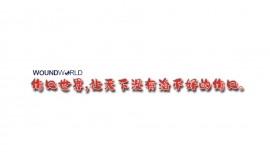
- 星期五, 03 11月 2023
Demonstrating the clinical efficacy of a multi-modality approach to managing various wound aetiologies
The article highlights the major challenge of limb amputation in the Caribbean and its effects on the patient’s quality of life, stressors on the family and the burden on the healthcare system. Four clinical cases are presented with various wound aetiologies and comorbidities; these patients were candidates for limb amputation. A reassessment of the traditional wound management approach paradigmatically shifted to a new strategy. This strategy includes clinically effective, easy-to-apply, and affordable products that help to reduce limb amputation, resulting in limb salvage.
Authors:
Larry G. Baratta and Yvonne Braithwaite Superville
Larry G. Baratta is International Medical Director, Chief Medical Officer - World Wide Wound Care, LLC;
Yvonne Braithwaite is Chief Executive Officer - Rovon Foot and Wound Care Clinic
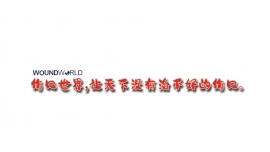
- 星期四, 02 11月 2023
Zero All Preventable (ZAP) amputations: FDUK position statement on “missingness” and reducing major amputations in the acute diabetes foot pathway
The Foot in Diabetes UK Zero All Preventable (ZAP) Amputations group is dedicated to minimising the occurrence of preventable lower limb amputations. This position statement aims to address the existing gap in delivering foot care services for individuals with diabetes and emphasises the critical necessity of prompt access to specialised foot care services to prevent delays and missed appointments. Moreover, it highlights the individual factors that can hinder or impede people with diabetes from seeking appropriate and timely foot care, encompassing psychological challenges and limitations of health literacy. Additionally, this paper explores recent advances in psychological strategies to mitigate the impact of distress on diabetes foot care.
Author:
Jayne Robbie, Catherine Bewsey, Duncan Stang, Andrew Sharpe, Louise Morris, Krishna Gohil, Christian Pankhurst and Michael Edmonds
Jayne Robbie is Senior Podiatrist, University Hospitals NHS Trust and Senior Lecturer, Birmingham City University, Birmingham, UK;
Catherine Bewsey is Chartered Counselling Psychologist, SWL ICS Foot Network Project, St George’s University Hospitals NHS Foundation Trust;
Duncan Stang is National Diabetes Foot Co-ordinator, Scotland;
Andrew Sharpe is Advanced Podiatrist, Salford Royal NHS Foundation Trust, UK;
Louise Morris is Principal Podiatrist, Trafford Local Care Organisation Podiatry Department, Trafford General Hospital, Manchester, UK;
Krishna Gohil is National Clinical Lead: Lower Limb Wounds National Woundcare Strategy Programme, UK;
Christian Pankhurst is Clinical Specialist Orthotist, Guy’s and St Thomas’ NHS Foundation Trust and King’s College Hospital. London, UK;
Michael Edmonds is Consultant Diabetologist, Diabetic Foot Clinic, King’s College Hospital, London, UK
This article first appeared in our sister publication, The Diabetic Foot Journal. Citation: Robbie J, Bewsey C, Stang D et al (2023) Zero All Preventable (ZAP) amputations: FDUK position statement on “missingness” and reduc-ing major amputations in the acute diabetes foot pathway. The Diabetic Foot Journal 26(1): 30–6

- 星期三, 01 11月 2023
The use of eHeath and digital health technology for lymphoedema care
Andrea Mangion and Neil Piller
Key words
Lymphoedema, eHealth, mHealth, telehealth Andrea Mangion is a Cancer and Lymphoedema Physiotherapist, Educator and PhD Candidate in the Lymphoedema Clinical Research Unit, Flinders University, Adelaide, Australia. Professor Neil Piller is the Director of the Lymphoedema Clinical Research Unit, Flinders University, Adelaide, Australia.
Declaration of interest: None
Abstract
While electronic health (eHealth) has been gaining in popularity in recent years, its adoption was accelerated by the COVID-19 pandemic, when restrictions on in-person consultations compelled healthcare practitioners to turn to modalities such as telehealth for patient management. There are numerous potential benefits of using eHealth in lymphoedema management, including improved access to care, better tracking of symptoms and enhanced options for patient engagement and empowerment. As healthcare practitioners continue to prioritise patient-centred care, with an emphasis on putting the patient’s needs first and making treatment as accessible as possible, eHealth offers a promising opportunity to improve lymphoedema care. This article provides an overview of eHealth, explores a classification system for the various forms of eHealth, discusses the rationale for using eHealth, and proposes future research directions in lymphoedema care.
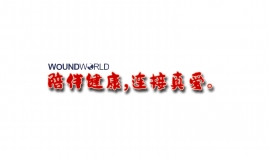
- 星期二, 31 10月 2023
Ten top tips: common wound errors and means to correct
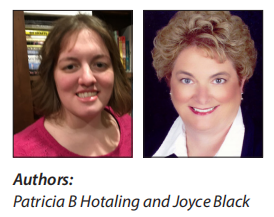
Patricia B Hotaling is a Clinical Assistant Professor of Nursing at the University of Nebraska Medical Center, in Nebraska, USA. She is an Adult-Gerontology Clinical Nurse Specialist;
Joyce Black is a Professor of Nursing at the University of Nebraska Medical Center, in Nebraska, USA; Fellow of the American Academy of Nursing and clinical editor of Wounds International
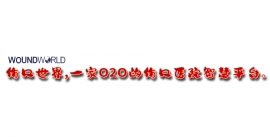
- 星期一, 30 10月 2023
Resistance training in patients with secondary lymphoedema: does it have any effect on functional and quality of life measures?
Andrea Damato, Aleksandra Rovnaya and Polly McGuigan
Abstract
The inclusion of resistance training in the care of patients with upper limb lymphoedema is an understudied developing concept. The study investigated the safety and effectiveness of adding a moderate/high intensity resisted exercise (RE) programme for 6 weeks on arm circumference, muscular strength and quality of life (QoL) measure in patients with breast cancer-related lymphoedema. This study included 35 patients with a history of breast cancer who were in phase two of their lymphoedema rehabilitation. They were assigned to either the intervention (n=18) or control (n=17) groups. The intervention consisted of resistance band exercises four times a week for 6 weeks. Limb circumference measurements, muscular strength, Disabilities of Arm, Shoulder, and Hand (DASH), Lower Extremity Functional Scale (LEFS) and Lymphoedema Quality of Life (LYMQOL) questionnaires were administered at baseline and at 6 weeks. After 6 weeks, the intervention group demonstrated statistically significant differences (p<0.01) in the DASH and LYMQOL scores. There was a significant change in UL and LL strength between both groups (p<0.05). Unexpectedly, there was a significant decrease in UL measurements in the hand, forearm, elbow and proximal arm in the intervention group (p<0.05). The results indicate that RE demonstrates a positive effect on arm function, symptoms and QoL without increasing arm volume in breast cancer-related lymphoedema.
Key words
Breast cancer, quality of life, resisted exercise
Andrea Damato is Physiotherapist, PhysioLympha. Aleksandra Rovnaya is Doctor, PhysioLympha. Polly McGuigan is Head of Department, Department for Health, University of Bath, Bath, UK. Declaration of interest: None.
Ethical approval: The study was approved by REACH (EP 20/21 103), University of Bath, UK and by the Russian Lymphology Association where the study was conducted.
